There is a drop in the number of moth species present in the garden in August compared with June and July but there is still variety in my moth trap, with some intriguing species. Here is a selection of moths that fly during August.
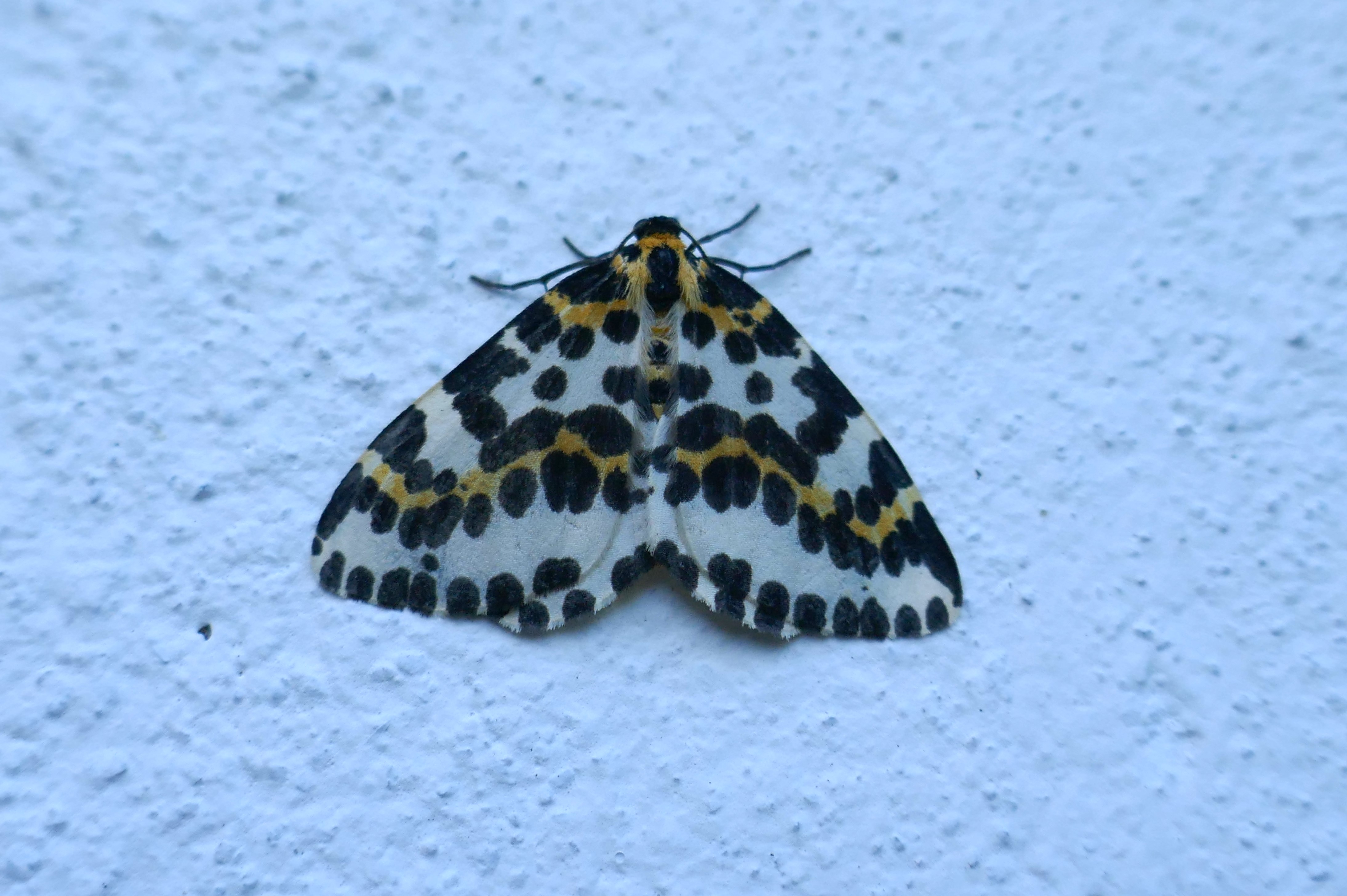
The Magpie is a striking moth that flies at night but occasionally during the day too. I recently watched a female flying on a sunny afternoon, laying eggs on Berberis thunbergii atropurpurea, a purple-leaved garden plant used for hedging or as an individual specimen. It breeds on a wide range of native plants Common Hazel, Common Hawthorn, Common Spindle, Heather (in Scotland and presumably here). It is capable of long flights, and famously Orkney and Shetland were colonized by it in the last few years. It appears to enjoy good abundance in Ireland but it has declined in England and Wales.
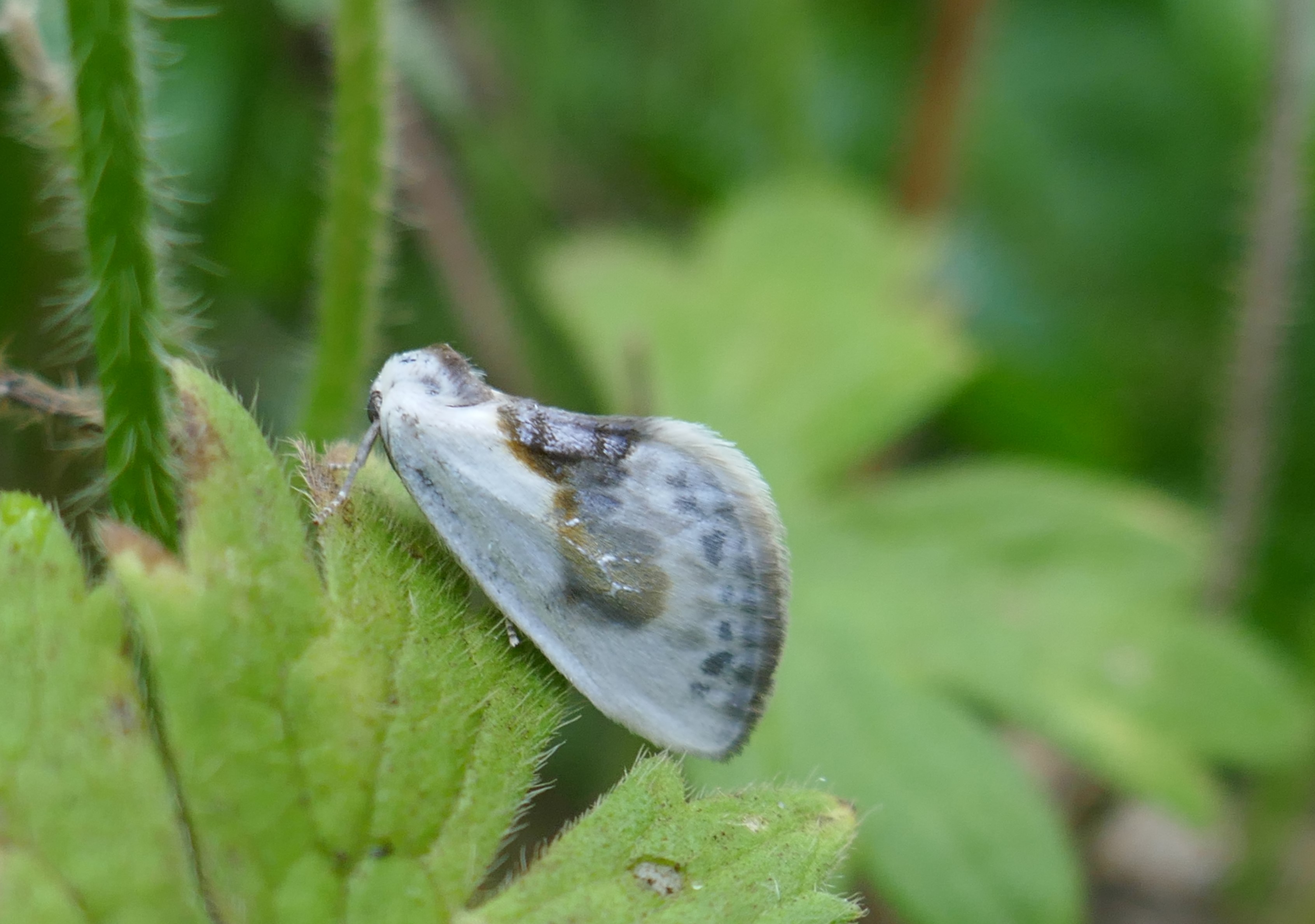
The Chinese Character might be better called the Bird Dropping moth for its resemblance to a bird dropping. This breeder on Crab Apple, Common Blackthorn, Common Hawthorn, Rowan, and other trees appears to be avoided by birds. Certainly, my Robin, who loves seeing my moth trap light up, shows no interest in this enigmatic moth. This moth is double-brooded.

The Scalloped Oak is also nocturnal and while it breeds on oak, it uses a wide range of trees as well as Honeysuckle, Bilberry and Heather. Given such a wide range of foodplants, it occurs in a range of habitats, such as woodland, hedges, gardens, parks, and bogs. It has one generation every year.
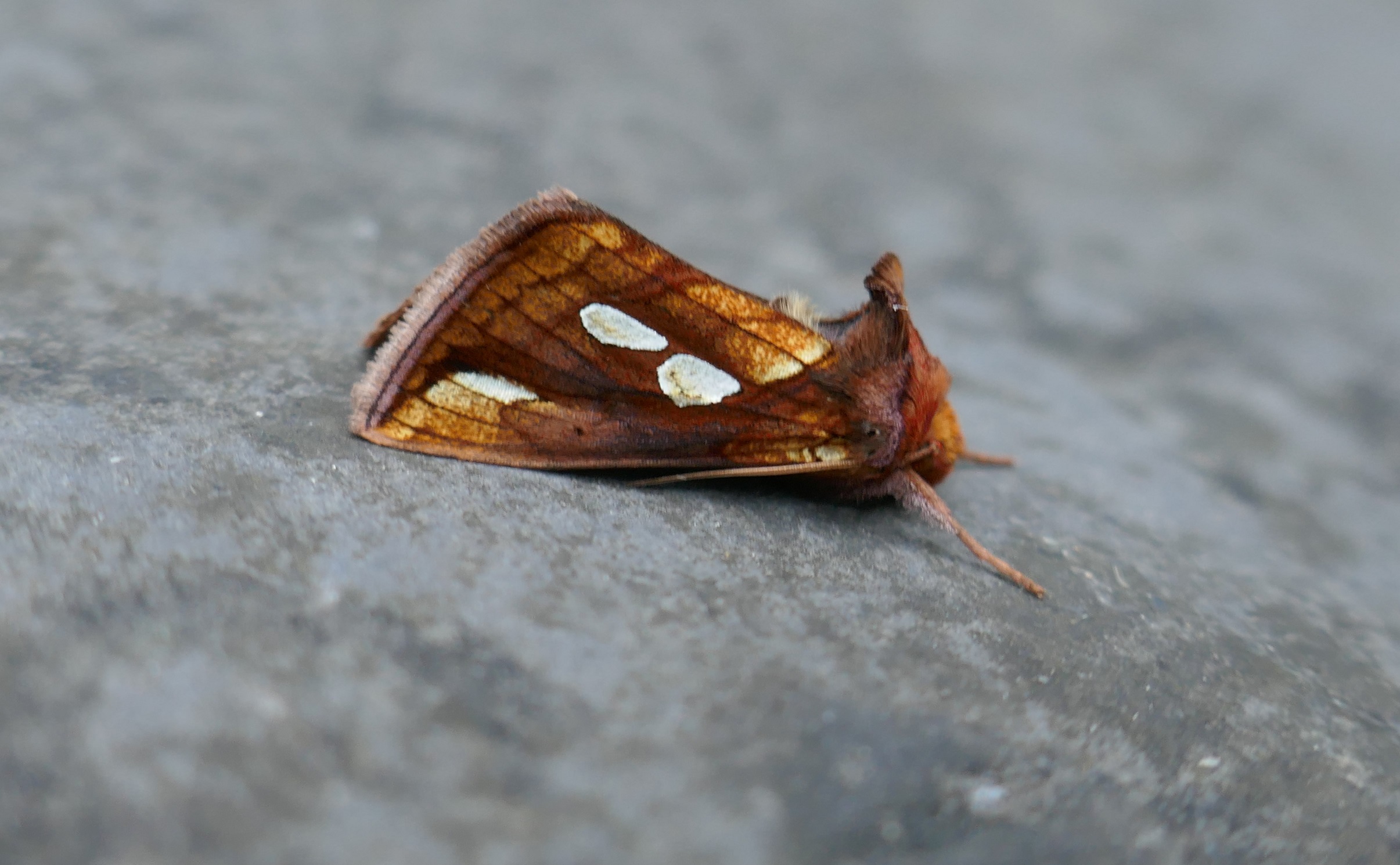
The Gold Spot is double-brooded, nocturnal, and occasionally day-flying when the day is muggy and overcast. It likes wet habitats, as it breeds on sedges, Yellow Iris, Branched Bur-reed and Water-plantain. It occurs in gardens that hold ponds with marsh and marginal vegetation.

The Pebble Prominent is generally common, breeds on willows and is double-brooded. In some years I get only one or two, but this year has been better, with five found last Wednesday.
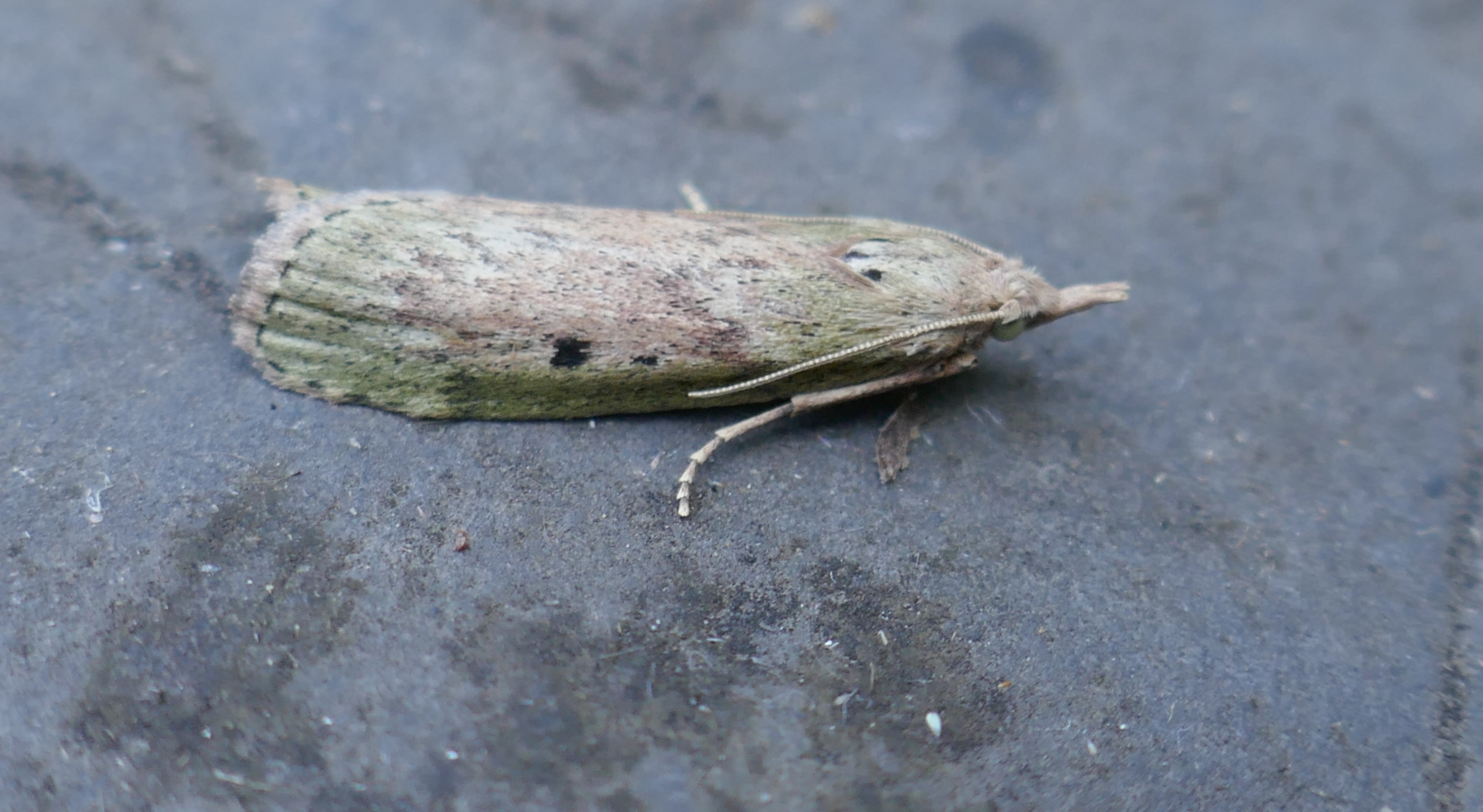
The Bee moth is a very interesting micro-moth that breeds on the nests of a range of wasp and bee species. Their yellow caterpillars protect themselves from their hosts by spinning a tough silk case, while they feed on the comb, honey, stored food, and even meconium (fecal matter). They can destroy nests and are considered a pest by beekeepers. Both sexes use sex pheromones during courtship and males sing to females by vibrating their abdominal plates. A courtship dance by both sexes occurs before mating. While this appears to be a destructive species, it should be noted that all species have their enemies, and it is rarely if ever the case that one species destroys its host, under circumstances of a functional ecosystem.
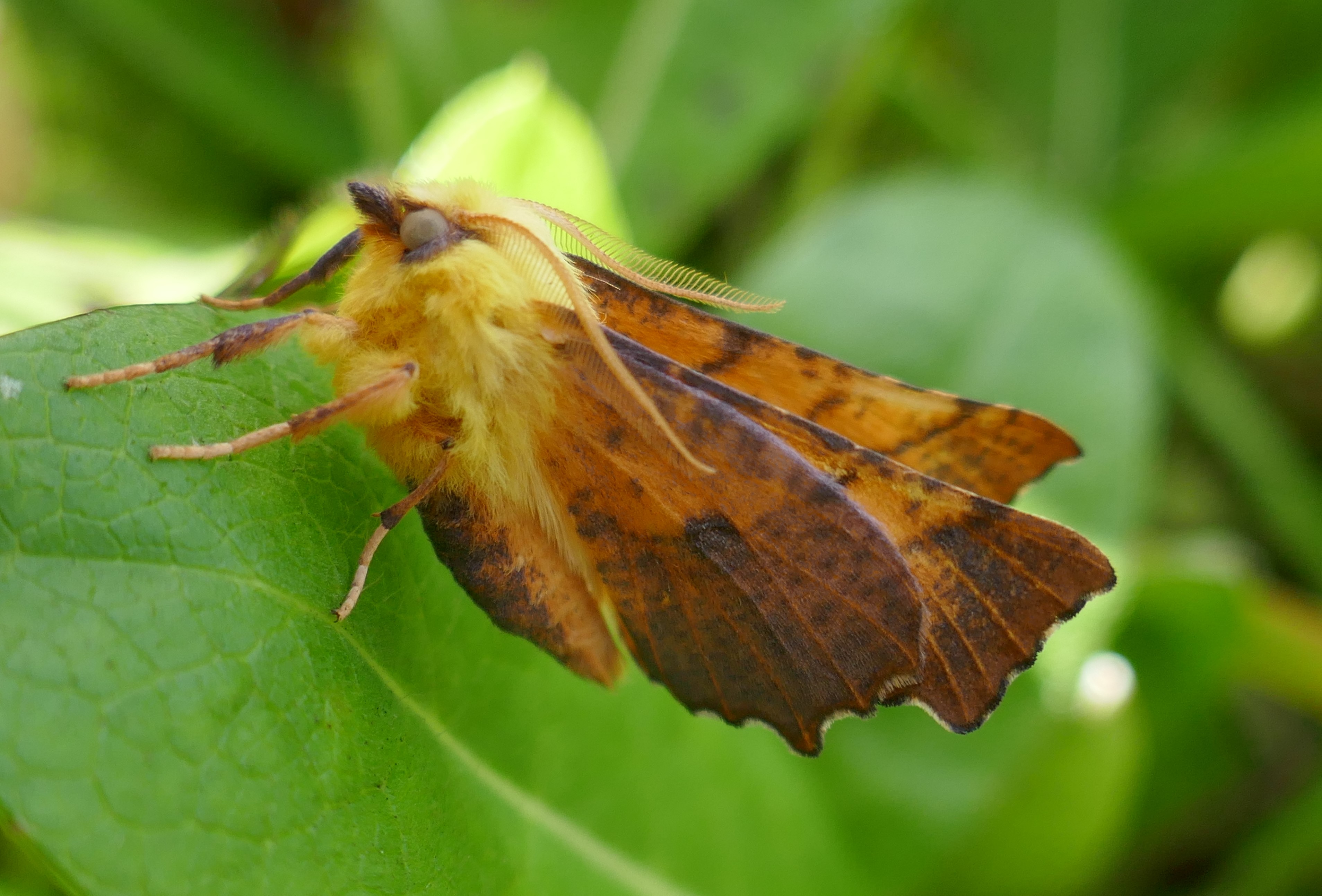
The Canary-shouldered Thorn is very well-named! It breeds on Downy and Silver Birch, Alder, limes, elms, Goat Willow, and Hornbeam. It is strictly nocturnal and flies in just one generation a year, from July to mid-October. It spends the daylight within trees, concealed on the underside of leaves.

As you can see, these moths breed mostly on native plants or, in the case of the Bee Moth feed on hosts that use native plants. By making native trees, shrubs, and flowers the key architecture of your garden, you will be making homes for our native moths and all the species that depend on moths for their survival. The Russian revolutionary Lenin is quoted as having said, “Everything is connected to everything else.” Without the elements needed, our ecosystems would collapse. Moths are excellent indicators of ecosystem functioning because they play such key roles mainly by providing food, pollination, and plant growth regulation. We have c. 1567 moth species in Ireland, so they are a significant proportion of our invertebrate population. Together with butterflies, the order Lepidoptera makes up about 9% of all life forms on the planet. We cannot do without them.

